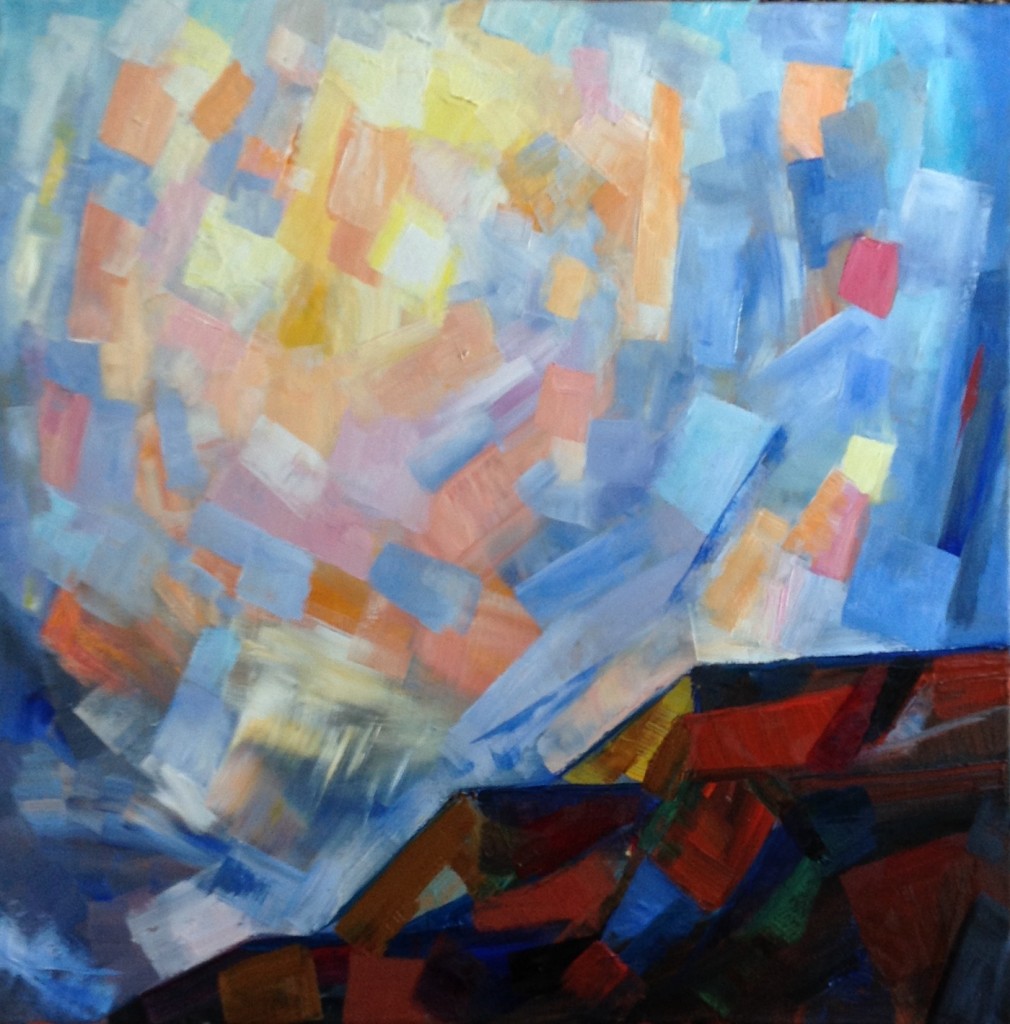It was a day of painting. Which is to say, the core, the heart, the focus of this day was painting — one probably wouldn’t say so just by the share of “objective time” it took.
This is a question I am living right now: what with my first online teaching program, and my attempts to be better at what I’ve come call (without due humility) the art of being, and at teaching, too — with more time, in short, dedicated to reflections, and meditations, and writing, and conversations, and just to walking, I spend less time in the studio than I used to, and than I would love to. Interestingly, I actually accomplish more in this shorter time — but, on the other hand, painting is not something I want to accomplish, not something I want to get done. It’s rather something I want to be doing. I have no idea how this dilemma, this particular tension will resolve itself — so, for now, I am just living through it, and wondering at it.
But back to this day: the eighty first sonnet painting is complete — or at least as complete as it can be before all its “sister paintings”, other components of the same sixteen-sonnets composition, are here. And since it’s only the fourth painting in this composition, it will take some time for all of them to materialise. For now, then, I am off to the next sonnet — and I also have one of the earlier sonnet compositions to rework. I don’t know yet which will come first.
So what are the thoughts and discoveries of this painting day, the thoughts and sensations that went into this painting (or should I rather say — “came out of it”)?
One realisation was that the painting shouldn’t try to be the solution to the puzzle of the sonnet. Rather, it should be as puzzling to the mind as the sonnet. And it’s not about mortality versus immortality (both of them, when all is said and done, are rather boring) — but rather about the vacillation between two “I”s; the experiencer and the witness, the “analog”, story-telling I — consciousness in Julian Jaynes’s sense, and something larger than that (in Jaynes’s framework, the other one would be “the whole animal”, functioning in the real world — but there is, of course, a variety of much grander and more esoteric interpretations in other frameworks and belief systems). The presence versus the absence of “ego”.
With this realisation, the painting changed. From the painting “about” earth and air, it turned into something about this trembling, fascinating vacillation between two “selves”, where you don’t quite now, at each particular moment, which one of them is “you”.
When I first envisioned this composition, I was confused about the location of the circle (or rather, the location of its centre): sometimes, it wanted to be right in the middle of the painting; other times, slightly off. Now there are really two circles with different centres, even though the eye of the beholder might be puzzled about it (justifiably). And a similar re-affirmation of ambiguities, ambivalences between alternative “solutions”, happened to other aspects of the painting, too: greys versus blues, curves versus straight lines.
Witnessing this process was itself an instance of vacillation between the experience of two selves. I berated myself for this for a time, assuming that the authentic painting process ought to come from this larger, deeper version of “self”. But then again — if I am to paint this trembling, this vacillation, akin to the motion of breathing in and out, then I am bound, in a sense, to experience it in the process. This is the experience the painting comes from.
